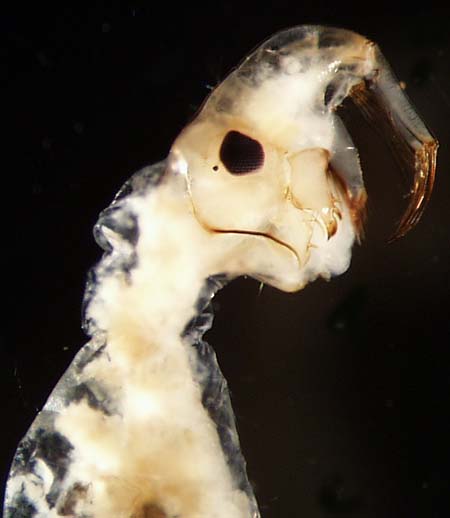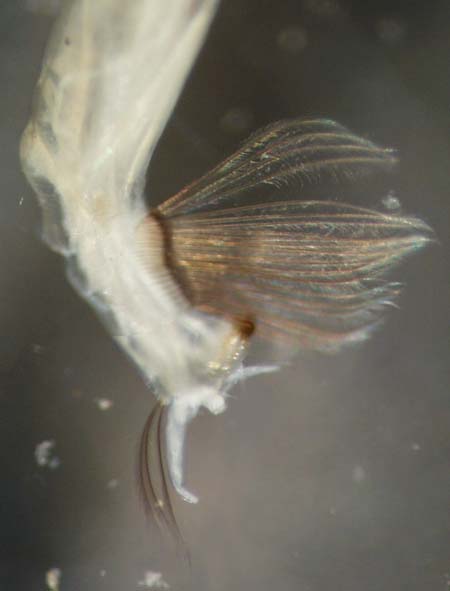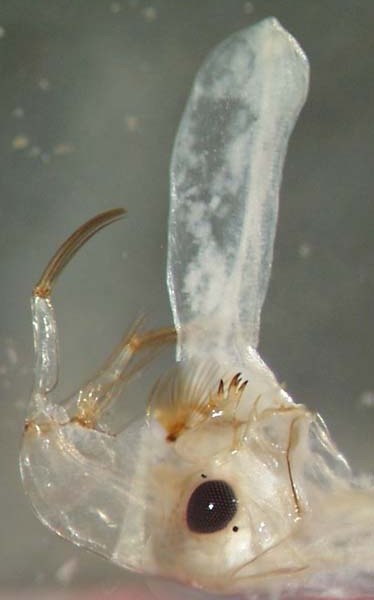
THE XERCES SOCIETY FOR INVERTEBRATE CONSERVATION Aquatic Invertebrates in Pacific Northwest Freshwater Wetlands |
| Identify taxa |
Chaoboridae (phantom midges) |
Chaoboridae are predators on tiny crustaceans and other small organisms. The mature larvae spend their days among the sediments at the bottom of wetlands and other lentic water bodies, then rise into the water column to feed. They feed at night to best avoid predation. Phantom midge larvae have distinctive, cone-shaped heads, with stout antenna that project down to aid in grasping prey. Many have bodies that are almost transparent, and dark air sacs may be visible in the thorax and near the end of the abdomen. They lack prolegs and do not have a breathing tube. |
Size:
medium to large Identifying feature(s): antennae modified to grasp prey items Habitat: lakes, pools, ponds; wetlands Tolerance to pollutants: moderate |
 |
|
© 2007 Xerces Society
Contact info@xerces.org




